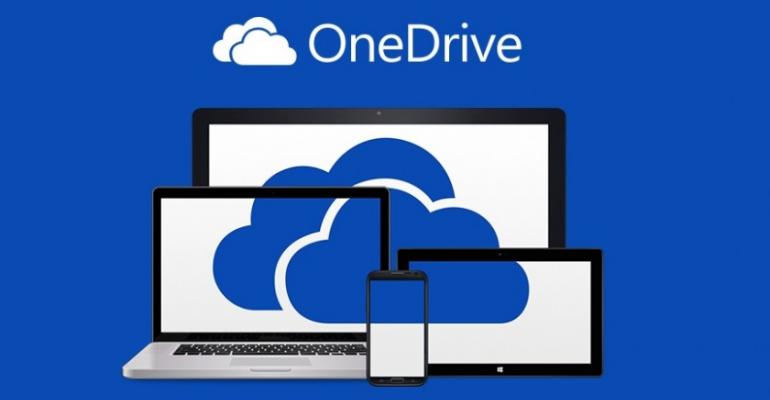When taking Richard Hay's app tour of the new Dropbox app, I was particularly struck by his assessment of whether or not Dropbox was actually a good value for customers. Dropbox is ubiquitous in some circles, but does ubiquity mean quality or value? I decided to take a look at a few common cloud-based storage services and compare their free offerings, their lowest paid offerings, and their feature sets. This way, it would be easy to see which cloud-based storage system works best for different users and their budgets.
I also included the scenario Rich suggests in his app tour: If you pony up for an Office 365 subscription, not only do you get a terabyte of storage, you also get to use a suite of office tools. Since he brought office apps into the discussion, it made sense to see how Google's free storage offering stacked up, since that does have an accompanying office-apps suite.
Below are the comparisons among five different cloud-based storage services: Dropbox, Box, OneDrive, Office 365 and Google Drive. I looked at ten basics that every service should cover, from file size to cost per gigabyte to ease of automation.
| Free account storage limits | |
| Dropbox | 2 GB |
| Box | 10 GB |
| OneDrive | 5 GB |
| Office 365 | N/A |
| Google Drive | 15 GB |
| Maximum file size | |
| Dropbox | The sum total of all files uploaded has to be smaller than your account's storage quota; otherwise, there's no limit on individual file size. |
| Box | 250 MB file free account/ 5GB for paid account. |
| OneDrive | 10 GB |
| Office 365 | 10 GB |
| Google Drive | For documents, up to 50 GB if they're converted to Google Docs format; other file formats can be up to 5 TB (provided you have the space for 5 TB worth of documents). |
| Lowest paid plan for individual users | |
| Dropbox | $9.99/mo for 1 TB of storage. |
| Box | $10/mo for 100 GB storage. |
| OneDrive | $1.99/mo for 50 GB of storage. |
| Office 365 | $8.33/mo for 1 TB storage. |
| Google Drive | $1.99/mo for 100 GB. |
| How much one gigabyte costs per month | |
| Dropbox | 1 penny per gigabyte |
| Box | 10 cents per gigabyte |
| OneDrive | 4 cents per gigabye |
| Office 365 | < 1 penny per gigabyte (0.83 cents, in fact) |
| Google Drive | 2 cents per gigabyte |
| Can you save things to the service from your desktop? | |
| Dropbox | Yes. |
| Box | There's a lot of add-on apps to help with that. |
| OneDrive | Yes. |
| Office 365 | Yes. |
| Google Drive | Yes -- you can drop-and-drag things right to your Google Drive. |
| Does it have a desktop app? | |
| Dropbox | Yes, for Windows, Mac OS X or Linux. |
| Box | Yes, for Windows and Mac OS X. |
| OneDrive | Yes, for Windows and Mac OS X. |
| Office 365 | Yes -- we're talking storage integration with OneDrive. |
| Google Drive | Yes, for Windows and Mac OS X. |
| Does it have a mobile app? | |
| Dropbox | Yes. |
| Box | Yes. |
| OneDrive | Yes. |
| Office 365 | Yes -- we're talking storage integration with OneDrive. |
| Google Drive | Yes. |
| What are the platforms for the mobile app? | |
| Dropbox | iOS, Android, Windows Phone, and Windows tablet. |
| Box | iOS, Android, Windows Phone, and Blackberry. |
| OneDrive | iOS, Android, Windows Phone, and Windows tablet. |
| Office 365 | iOS, Android, Windows Phone, and Windows tablet. |
| Google Drive | iOs and Android. |
| Does it have a web-based interface too? | |
| Dropbox | Yes. |
| Box | Yes. |
| OneDrive | Yes. |
| Office 365 | Yes. |
| Google Drive | Yes. |
| Can you automate file backups via Zapier and IFTTT? | |
| Dropbox | Yes. |
| Box | Yes. |
| OneDrive | Yes. |
| Office 365 | Yes. |
| Google Drive | Yes. |
| Is it integrated with Microsoft products? | |
| Dropbox | Yes -- the service is integrated with Office so you can open Office files in your Dropbox account, edit those files in your Office apps, and save them back to your Dropbox account. |
| Box | Yes -- you can use the Box for Office app on your PC to save your Office files to a Box account. |
| OneDrive | Yes, on account of it being a Microsoft product. |
| Office 365 | Yes, on account of it being a Microsoft product. |
| Google Drive | As it turns out, yes. |





